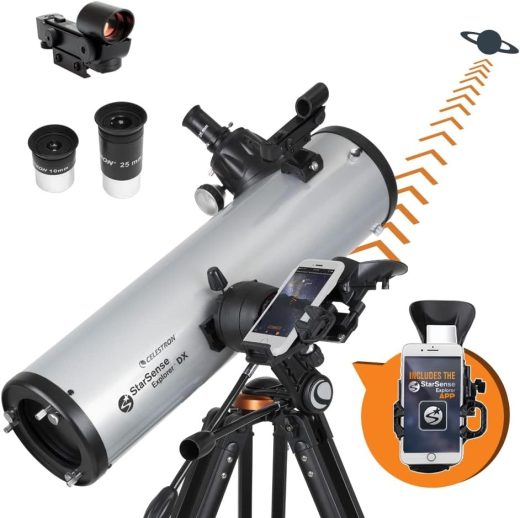Best Telescopes for Deep Space in 2023
Best Telescopes for Deep Space in 2023
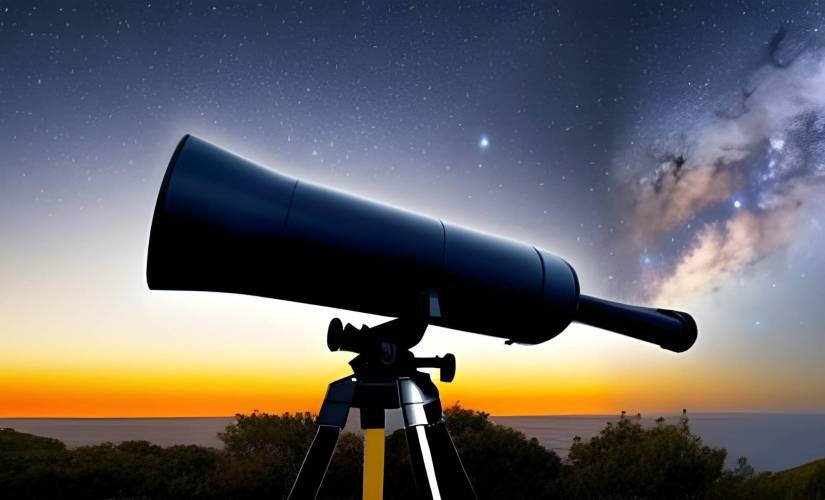
Embark on an extraordinary voyage through the cosmos with our guide to the best telescopes for deep space in 2023. If you’re captivated by the mysteries of distant galaxies, nebulae, and star clusters, having the right telescope is essential. In this article, we have carefully curated a selection of telescopes renowned for their exceptional performance in capturing the wonders of deep space. Join us as we explore these top telescopes designed to unveil the secrets of the universe.
Orion 10015 StarBlast
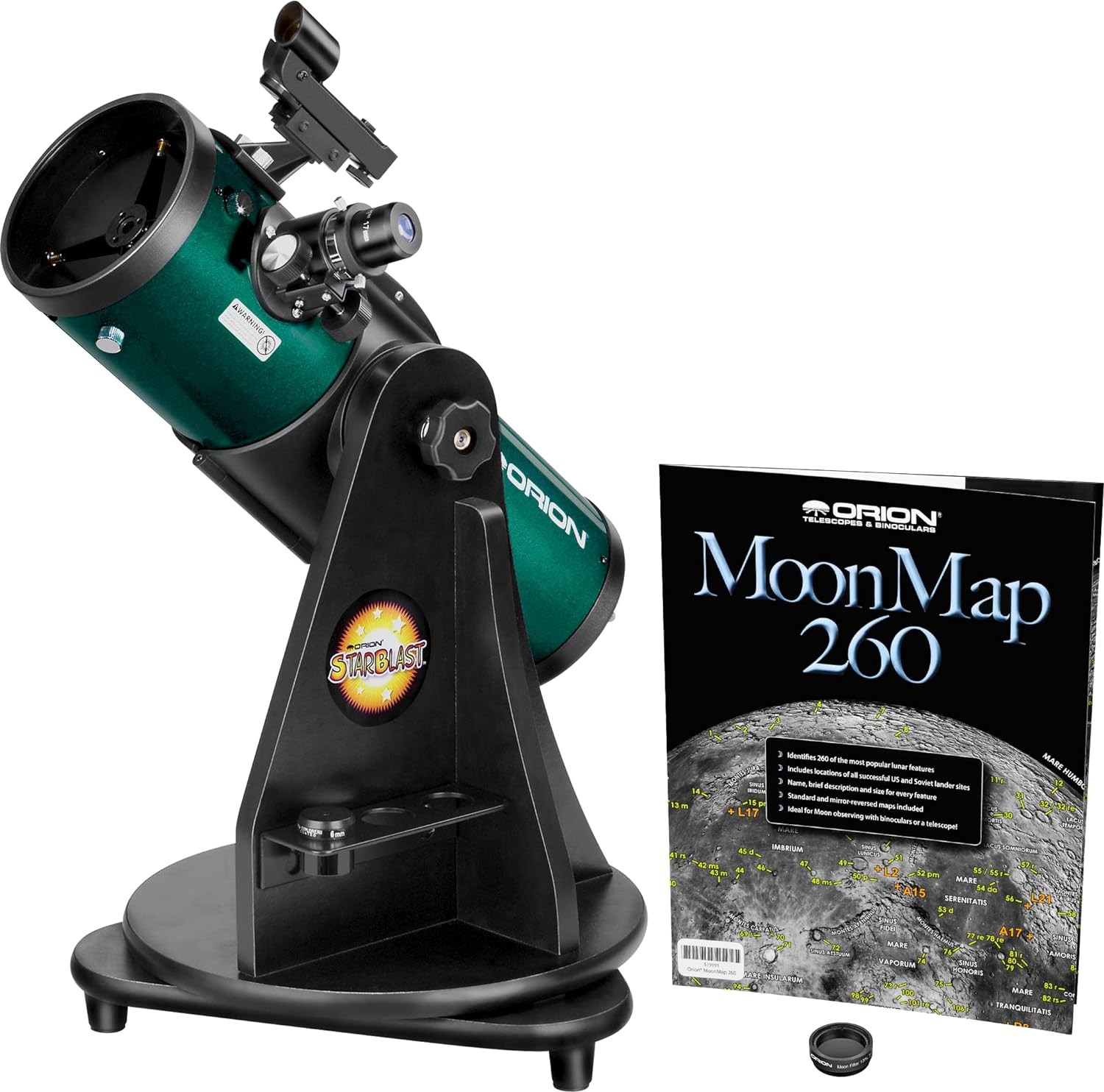
The Orion 10015 StarBlast 4.5 Astro Reflector Telescope is a compact and user-friendly instrument for amateur astronomers, earning a rating of 4.3 out of 5 stars.
Key stats:
- Aperture: 4.5 inches (114mm)
- Focal length: 450mm
- Magnification: 16x – 90x (using included eyepieces)
Reasons to buy:
The telescope’s compact size and portability make it an excellent choice for beginners and those looking for a grab-and-go telescope. Its 4.5-inch aperture provides impressive light-gathering capabilities for observing planets, moon, and deep-sky objects like nebulas and galaxies. The set comes with two eyepieces and EZ Finder II aiming device, providing various magnification options for stargazers and offering a satisfying observing experience.
Reasons to not buy:
As a compact and beginner-friendly telescope, the Orion 10015 StarBlast might not be suitable for advanced or professional astronomers who require more sophisticated or powerful optical systems. The tabletop design may not be ideal for those searching for a more stable and fully adjustable stand. Additionally, the scope lacks computerized tracking, which could disappoint users who prefer automated assistance in locating celestial objects.
Pros:
- Compact design
- User-friendly
- Decent light-gathering capabilities
- Two eyepieces included
Cons:
- Not suitable for advanced users
- Tabletop design might not suit all
- Lacks computerized tracking
Orion 8944 SkyQuest XT6
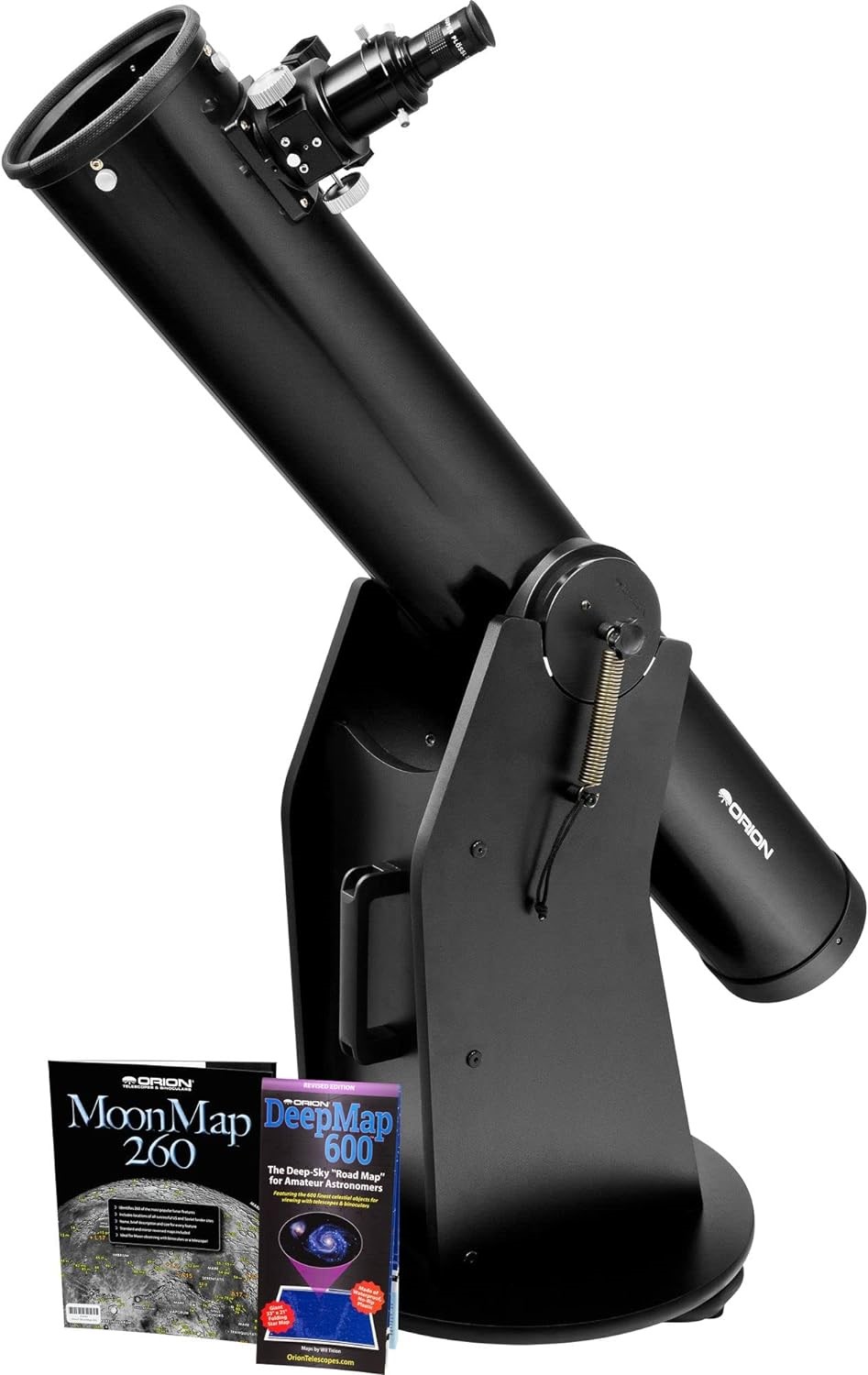
The Orion 8944 SkyQuest XT6 Classic Dobsonian Telescope offers a perfect balance of performance and affordability, earning a solid 4.5 out of 5 rating.
Key stats:
- Aperture: 6-inch (150mm)
- Focal length: 1200mm, f/8.0
- Magnification: 48x and 120x (with included eyepieces)
Reasons to buy:
If you’re into stargazing and looking for a user-friendly yet powerful telescope, the Orion 8944 SkyQuest XT6 Classic Dobsonian Telescope is an excellent choice. With its large 6-inch aperture, this telescope captures significantly more light than smaller scopes, offering crisp and detailed views of celestial objects like the Moon, Jupiter, and Saturn. The simple, intuitive altazimuth mounting design enables easy maneuvering, and the included eyepieces provide versatile magnification options. This telescope also features a sturdy and stable base, ensuring a comfortable observing experience.
Reasons to not buy:
While the Orion 8944 SkyQuest XT6 is a great beginner to intermediate telescope, some users may find it bulky and heavy due to its large aperture. This can make transportation and storage a challenge. Additionally, if astrophotography is your goal, this might not be the best option, as the Dobsonian mount is not ideal for tracking celestial objects during long exposure photography.
Pros:
- Large 6-inch aperture for bright and detailed views
- Simple and intuitive altazimuth mount design
- Two eyepieces included for versatile magnification
- Sturdy and stable base for comfortable observing
Cons:
- Can be bulky and heavy, making it less portable
- Not ideal for astrophotography due to mount limitations
Orion 09007 SpaceProbe
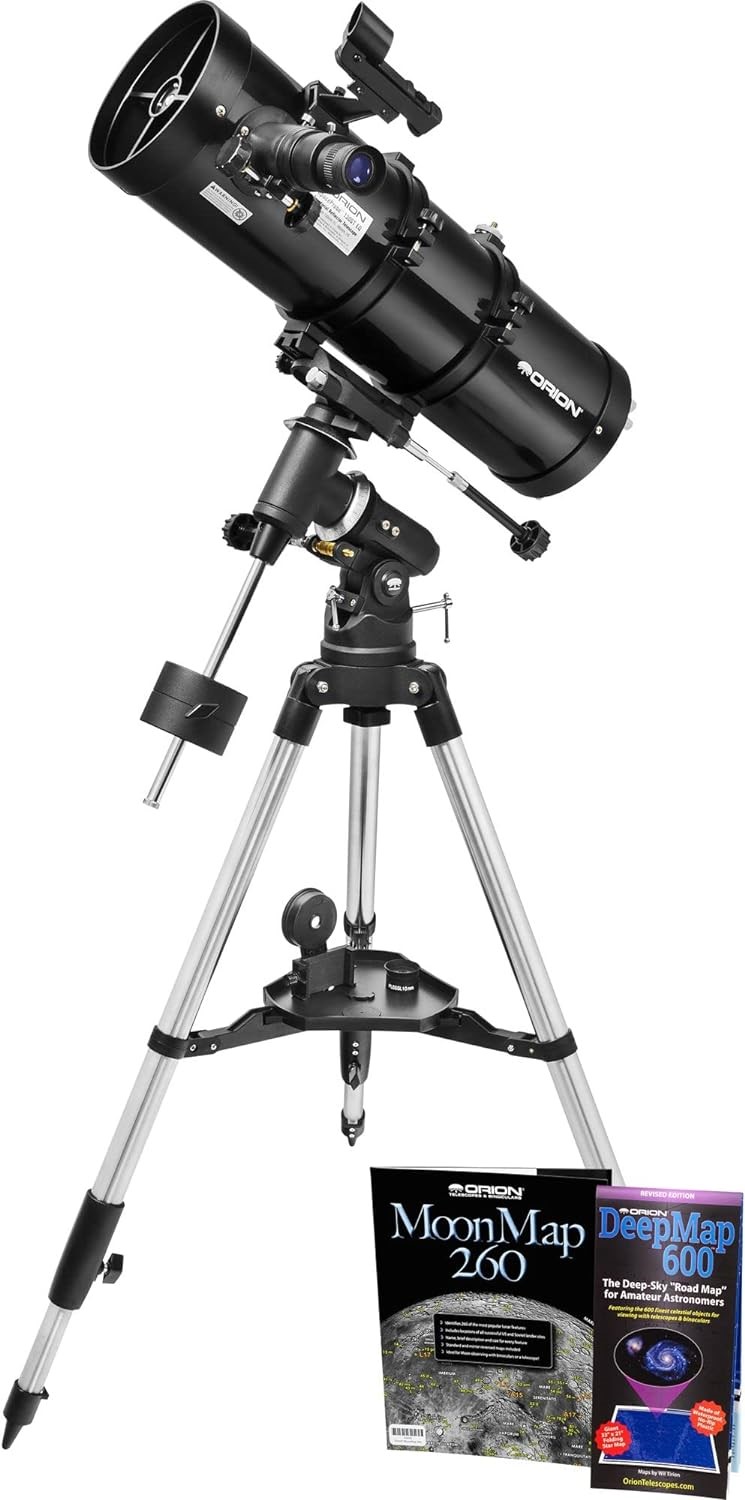
The Orion 09007 SpaceProbe 130ST Equatorial Reflector Telescope is a versatile, high-performance telescope perfect for both beginners and experienced stargazers, earning a 4.5 out of 5 rating.
Key Stats:
- Aperture: 130mm (5.1 inches)
- Focal length: 650mm (25.6 inches)
- Equatorial mount with slow-motion controls
Reasons to buy:
The Orion 09007 SpaceProbe 130ST Equatorial Reflector Telescope offers excellent value, providing impressive views of celestial objects while maintaining an affordable price. With its 130mm aperture and 650mm focal length, this telescope is well-suited for observing the Moon, planets, and deep-sky objects such as galaxies and nebulae. The equatorial mount with slow-motion controls allows for smooth tracking of celestial objects as they move across the sky. Additionally, the telescope comes with a comprehensive accessory package, including two eyepieces, a finderscope, and a collimation cap, making it easy for even beginners to start exploring the heavens.
Reasons to not buy:
While the Orion 09007 SpaceProbe 130ST offers many advantages, it may not be suitable for those looking for a more portable telescope, as it is large and relatively heavy. The assembly and setup process can be time-consuming and challenging for some users, particularly those with limited experience in using an equatorial mount. Furthermore, although the provided eyepieces allow for good observation capabilities, those in search of higher magnification will need to invest in additional eyepieces.
Pros:
- 130mm aperture and 650mm focal length, providing impressive views of celestial objects
- Equatorial mount with slow-motion controls for smooth object tracking
- Comprehensive accessory package included
- Affordable price for the features offered
Cons:
- Large and relatively heavy, making it less portable
- Assembly and setup can be time-consuming and challenging for beginners
- Higher magnification requires additional eyepiece investments
Celestron PowerSeeker 80EQ Telescope
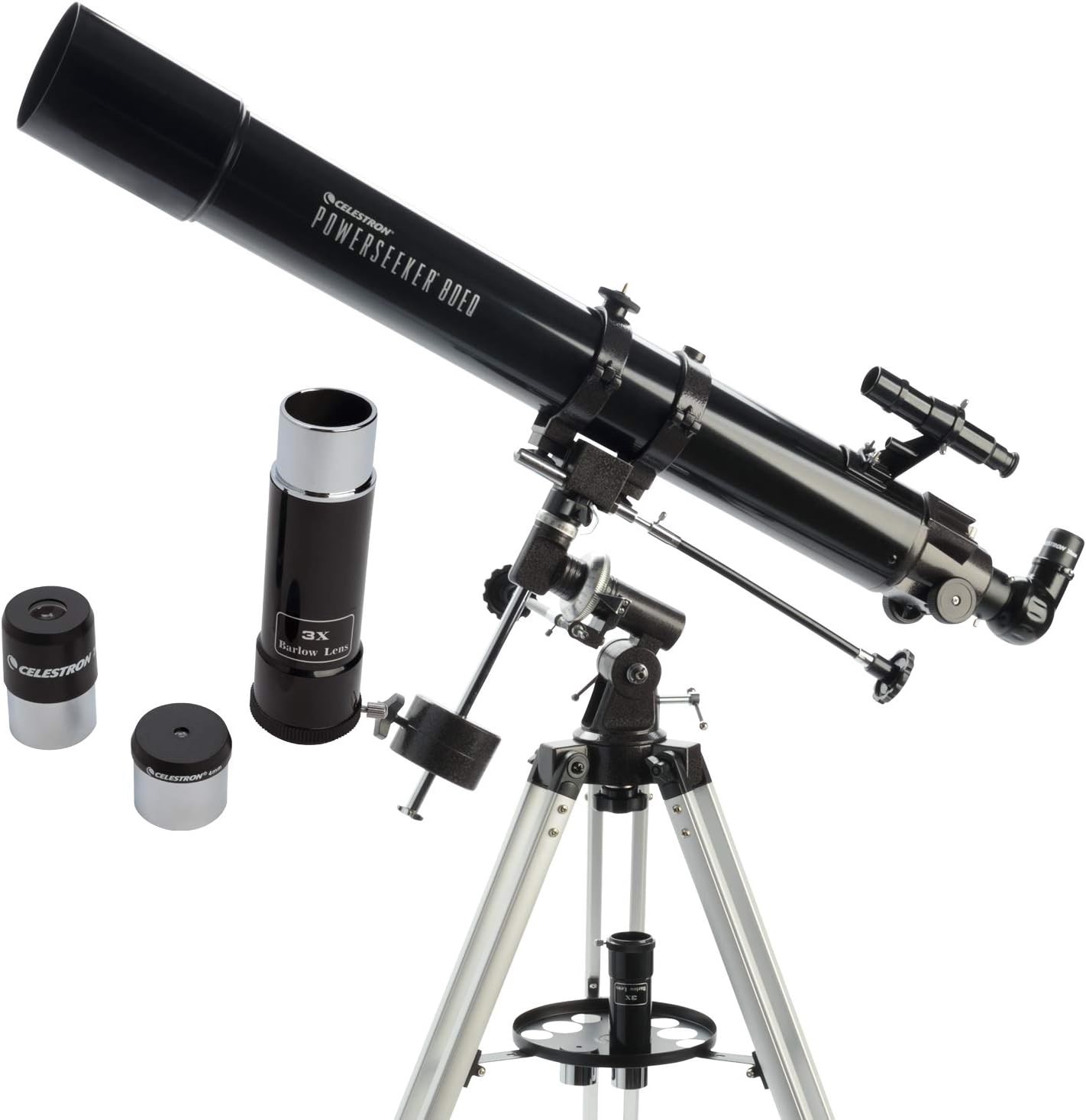
The Celestron PowerSeeker 80EQ Telescope is a user-friendly and powerful tool for stargazing and astronomy enthusiasts, earning a solid rating of 4 out of 5 stars.
Key stats:
- Aperture: 80mm (3.15 inches)
- Focal length: 900mm (f/11)
- Mount type: Equatorial
Reasons to buy:
The Celestron PowerSeeker 80EQ Telescope offers clear and bright images, thanks to its 80mm aperture and high-quality coated glass optics. Designed with the beginner in mind, it provides ease of use with its equatorial mount helping users to easily track celestial objects. The telescope comes with various accessories like two eyepieces with different magnifications, a tripod, and a 3x Barlow lens, offering great value for the price paid. This is a perfect choice for those looking to start their journey in astronomy or indulge in an educational hobby.
Reasons not to buy:
Despite its many advantages, the Celestron PowerSeeker 80EQ Telescope is not as portable due to its size and weight. Assembling the telescope, especially the equatorial mount, might be challenging for absolute beginners.
Pros:
- Bright and clear images
- Easy celestial tracking with the equatorial mount
- Beginner-friendly
- Great value for money with included accessories
Cons:
- Limited portability due to size and weight
- Assembly may be challenging for beginners
Gskyer 130EQ Professional Astronomical Telescope
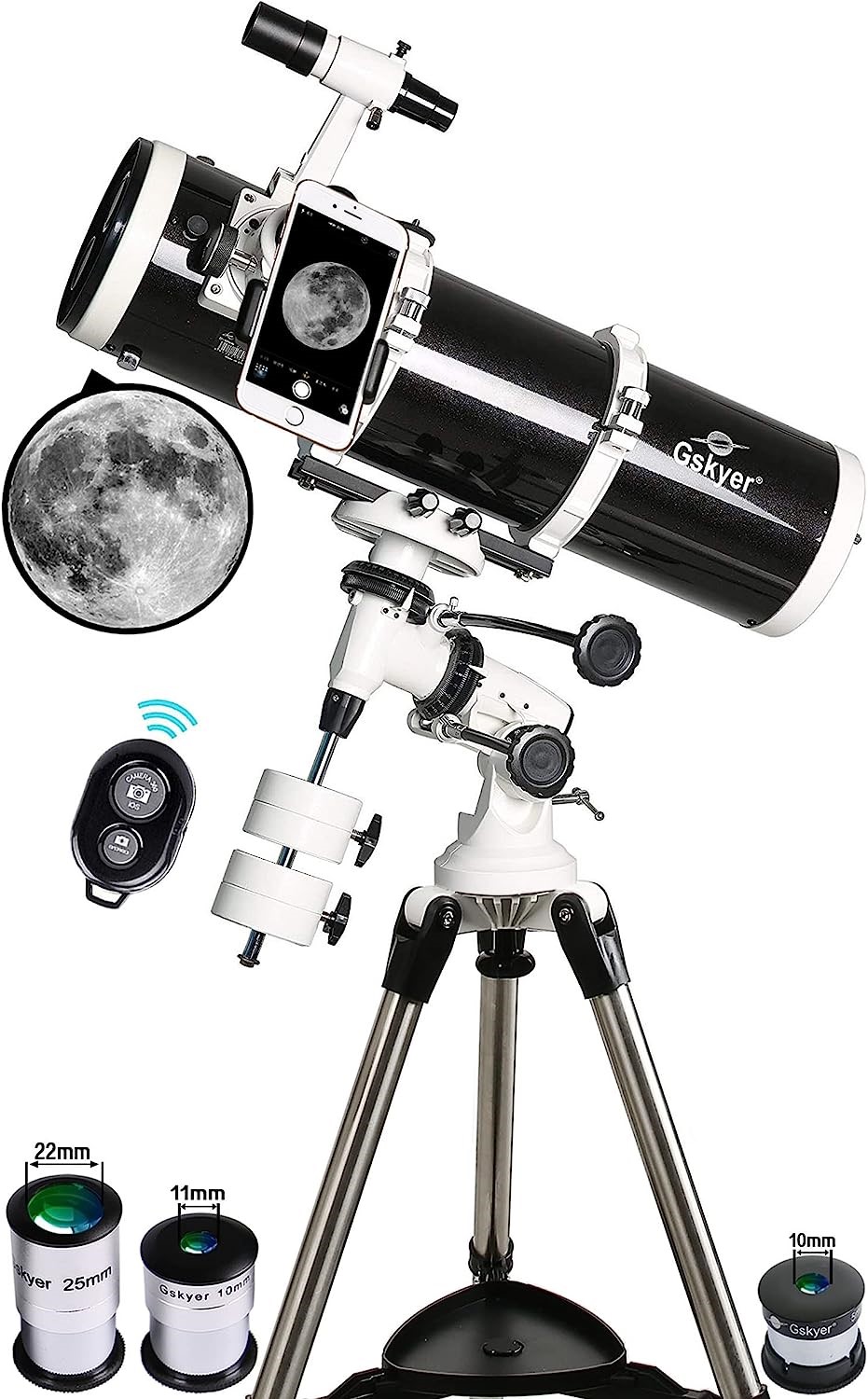
The Gskyer 130EQ Professional Astronomical Telescope is an advanced, yet user-friendly device ideal for amateur astronomers, boasting a rating of 4.5 out of 5 stars.
Key Stats:
- 130mm aperture size for clear, bright images
- Equatorial mount for easy tracking of celestrial objects
- 5×24 finderscope to help accurately locate objects
Reasons to buy:
The Gskyer 130EQ is a fantastic option for anyone passionate about exploring the night sky. This high-quality telescope boasts a 130 mm aperture, allowing for superior light-gathering capabilities and crisp, bright images of celestial objects. The equatorial mount makes it simple to track celestial objects as they move across the sky, and the 5×24 finderscope ensures users can accurately locate their desired targets. Combined with its ease of use and impressive performance, the Gskyer 130EQ offers excellent value, making it an ideal choice for beginner and intermediate astronomers alike.
Reasons to not buy:
While the Gskyer 130EQ offers many quality features, there are a few reasons one might want to consider other options. This telescope may prove to be too bulky and heavy for some users, limiting portability and easy transportation. Additionally, the included eyepieces may not provide ample magnification or clarity for more advanced users, necessitating the purchase of additional accessories. Lastly, the set-up process may be challenging for those new to using equatorial mounts, potentially causing frustration and taking away from the overall stargazing experience.
Pros:
- Large aperture for clear, bright images
- Equatorial mount for easy tracking
- 5×24 finderscope for accurate object locating
- Suitable for beginners and intermediate users
- Excellent value for money
Cons:
- Bulky and less portable
- Included eyepieces may be inadequate for advanced users
- Set-up can be challenging for novices
Celestron Advanced VX 6? Refractor Telescope
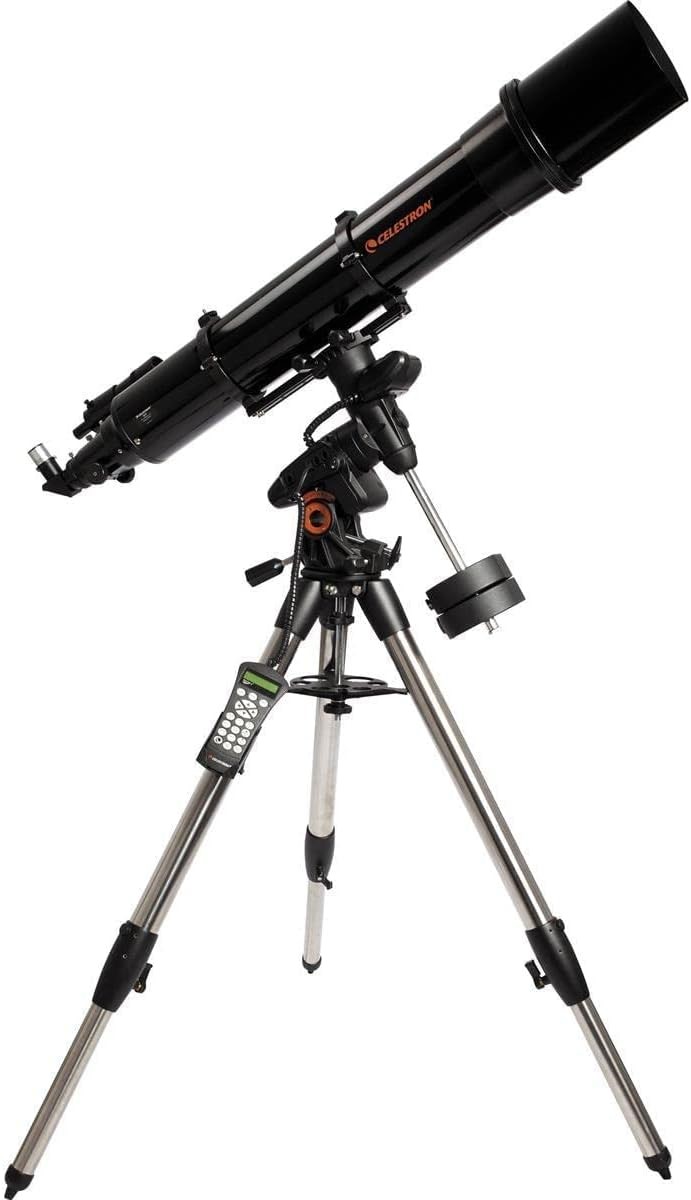
The Celestron Advanced VX 6? Refractor Telescope is a powerful and versatile tool for avid stargazers, offering remarkable views of the night sky with a 4.5 out of 5 rating.
Key Stats:
- Aperture: 6 inches (150mm)
- Focal Length: 1200mm
- Mount Type: Advanced VX Equatorial mount
Reasons to buy:
The Celestron Advanced VX 6? Refractor Telescope include has high-quality optics, which deliver crisp and clear images of celestial objects like planets, nebulas, and galaxies. The Advanced VX equatorial mount ensures precise tracking and stability, allowing for smooth and accurate movement necessary for long-exposure astrophotography. Additionally, the easy-to-use GoTo functionality, with a database of over 40,000 celestial objects, simplifies navigation and ensures that users of all skill levels can fully enjoy their stargazing experience.
Reasons not to buy:
TThe Celestron Advanced VX 6? Refractor Telescope might not be the best choice for beginners, as it requires some understanding of telescope operations and maintenance, which can be overwhelming for novices. Additionally, the telescope’s size and weight may not be ideal for users who require a more portable option, and the higher price point might not suit everyone’s budget.
Pros:
- High-quality optics provide sharp and detailed views
- Advanced VX mount for precise tracking and stability
- GoTo functionality with a vast celestial database
Cons:
- Not beginner-friendly
- Bulky and difficult to transport
- Higher price point may not suit all budgets
Celestron StarSense Explorer
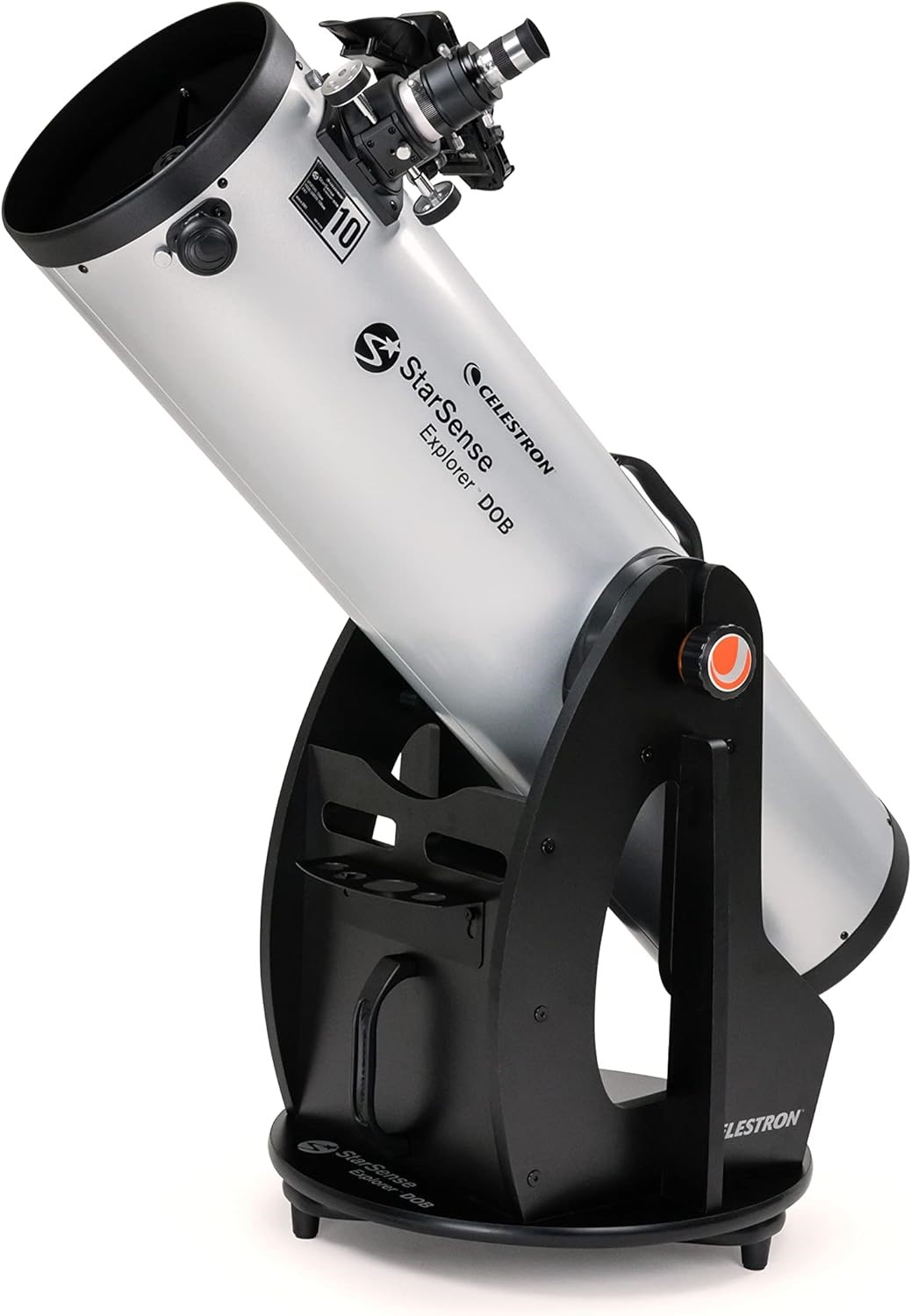
The Celestron StarSense Explorer is a user-friendly telescope with advanced technology, earning a 4 out of 5 stars rating.
Key Stats:
- 5-inch aperture size for clear and detailed views
- StarSense Sky Recognition Technology for easy navigation
- 2 high-quality eyepieces (25mm and 10mm) for versatile viewing options
Reasons to buy:
The Celestron StarSense Explorer is perfect for beginners and intermediate stargazers, offering the unique StarSense Sky Recognition Technology that simplifies navigation and makes finding celestial objects easy and enjoyable. The 5-inch aperture size provides clear and detailed views, while the two high-quality eyepieces (25mm and 10mm) allow for versatile viewing capabilities. Built with high-quality materials and precision engineering, this telescope also boasts easy maintenance and excellent durability.
Reasons not to buy:
The Celestron StarSense Explorer may not be the most suitable telescope for advanced astronomers, as its features and capabilities might not meet their expectations for more detailed celestial observation. Additionally, it is not the most budget-friendly option available, which may discourage those who are new to stargazing and looking for a more affordable telescope to start with.
Pros:
- User-friendly and easy to set up
- StarSense Sky Recognition Technology for simplified navigation
- Quality 5-inch aperture for clear viewing
- Two versatile eyepieces included
- Durable design and construction
Cons:
- May not suit advanced astronomers’ expectations
- Not the most budget-friendly option available
SOLOMARK Newtonian Reflector Telescope
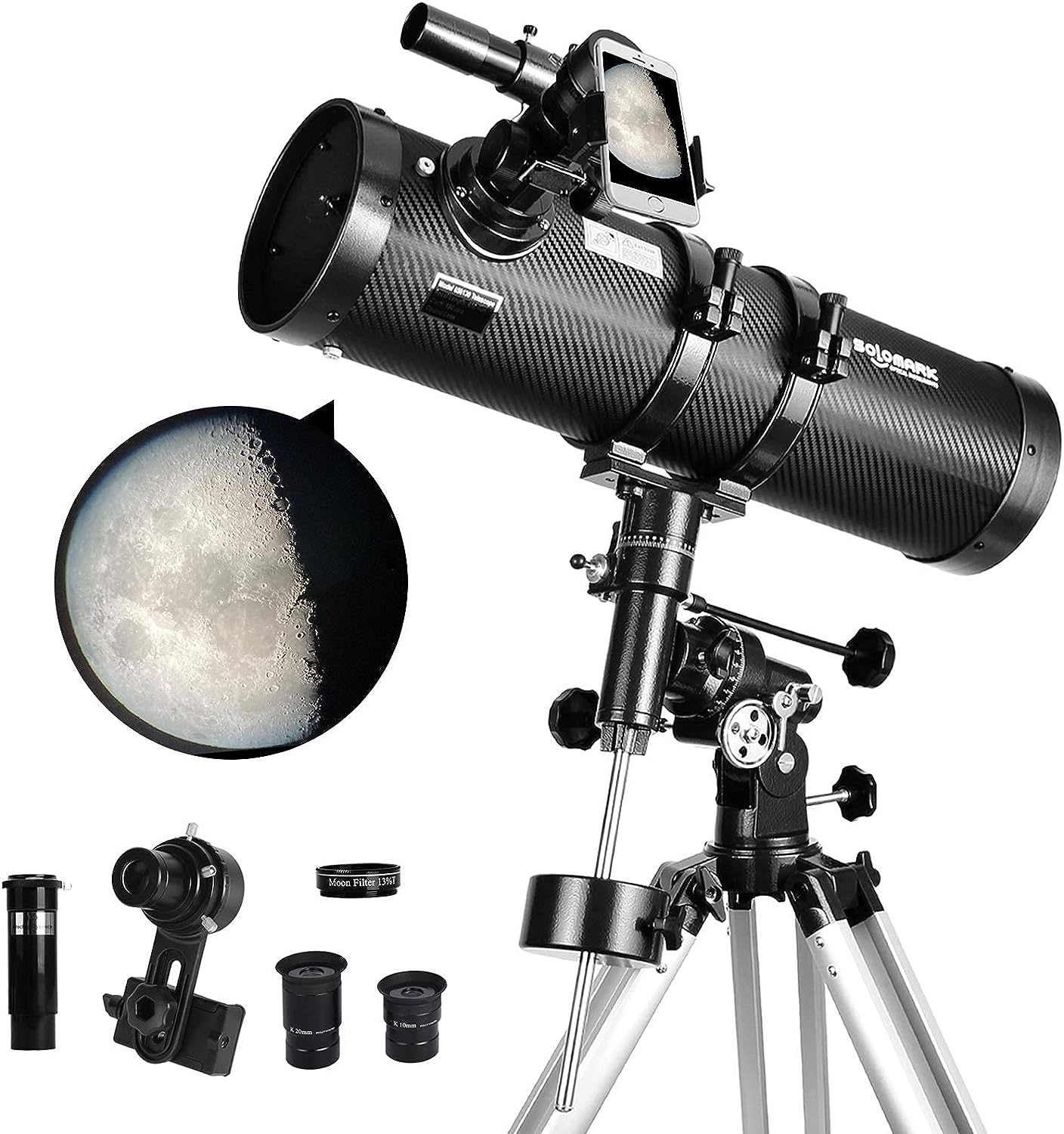
The SOLOMARK Newtonian Reflector Telescope offers an impressive stargazing experience with clear visuals and a user-friendly design, earning a rating of 4.5 out of 5.
Key Stats:
- Aperture: 130mm (5.1 inches)
- Focal Length: 650mm
- Magnification: 26x to 195x (with included eyepieces)
Reasons to buy:
The SOLOMARK Newtonian Reflector Telescope is an outstanding choice for both beginners and experienced astronomers. With a 130mm aperture, it gathers ample light to provide bright, clear images of celestial objects. The telescope also comes with two eyepieces and a Barlow lens, offering a versatile range of magnification options. Its sturdy, adjustable tripod ensures stability during observations, and the user-friendly construction makes it easy to set up and operate. Overall, the SOLOMARK offers excellent value for its price, providing exceptional performance and a great introduction to the fascinating world of astronomy.
Reasons to not buy:
While the SOLOMARK Newtonian Reflector Telescope offers an impressive overall performance, it may not suit the most advanced astronomers who seek exceptional image clarity and detailed views of deep-sky objects. The telescope’s mount may feel somewhat unstable when extended to its highest magnification, impacting the viewing experience. Additionally, the telescope lacks a computerized tracking system, which may limit the ease of locating and tracking celestial objects, especially for novice users.
Pros:
- 130mm aperture for bright, clear images
- Range of magnification options
- User-friendly design and setup
- Sturdy, adjustable tripod
- Excellent value for the price
Cons:
- May not be suitable for advanced astronomers
- Mount stability issues at the highest magnification
- Lacks computerized tracking system
Celestron Omni XLT 150
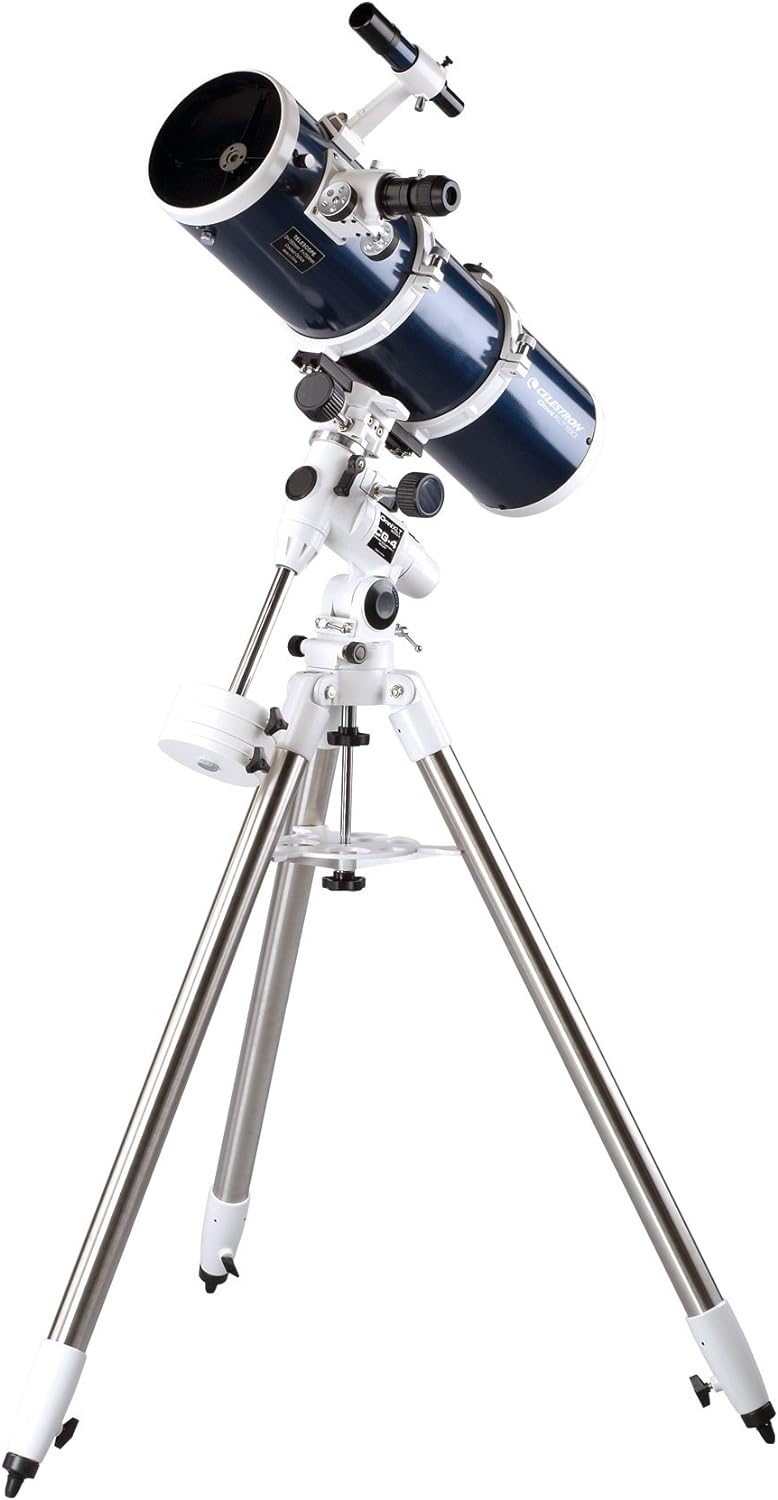
The Celestron Omni XLT 150 is an impressive and versatile telescope designed for both beginners and experienced stargazers, earning a rating of 4 out of 5 stars.
Key stats:
- 150mm aperture size
- 750mm focal length
- StarBright XLT optical coatings
Reasons to buy:
The Celestron Omni XLT 150 is perfect for those looking to explore the night sky with a user-friendly telescope, offering high-quality optics, a large aperture size, and the highly-regarded StarBright XLT optical coatings. The scope’s sturdy CG-4 German Equatorial mount ensures smooth tracking of celestial objects, while its durable construction guarantees longevity, making this a fantastic investment for astronomy enthusiasts. Moreover, the detailed instruction manual assists beginners in mastering the ins and outs of stargazing.
Reasons to not buy:
Despite its many great features, the Celestron Omni XLT 150 may not suit everyone’s needs. The scope’s slightly higher price point might be discouraging for those on a budget, and because it is not computerized or motorized, users who desire more convenience may prefer a different model. Additionally, the setup process could be complicated for beginners, potentially leading to frustration and a less-than-optimal stargazing experience.
Pros:
- High-quality optics
- Large 150mm aperture
- StarBright XLT coatings for improved light transmission
- Sturdy CG-4 German Equatorial mount
- Great for both beginners and experienced users
Cons:
- Higher price point
- Not computerized or motorized
- Setup process could be challenging for beginners
StarSense Explorer DX 130AZ
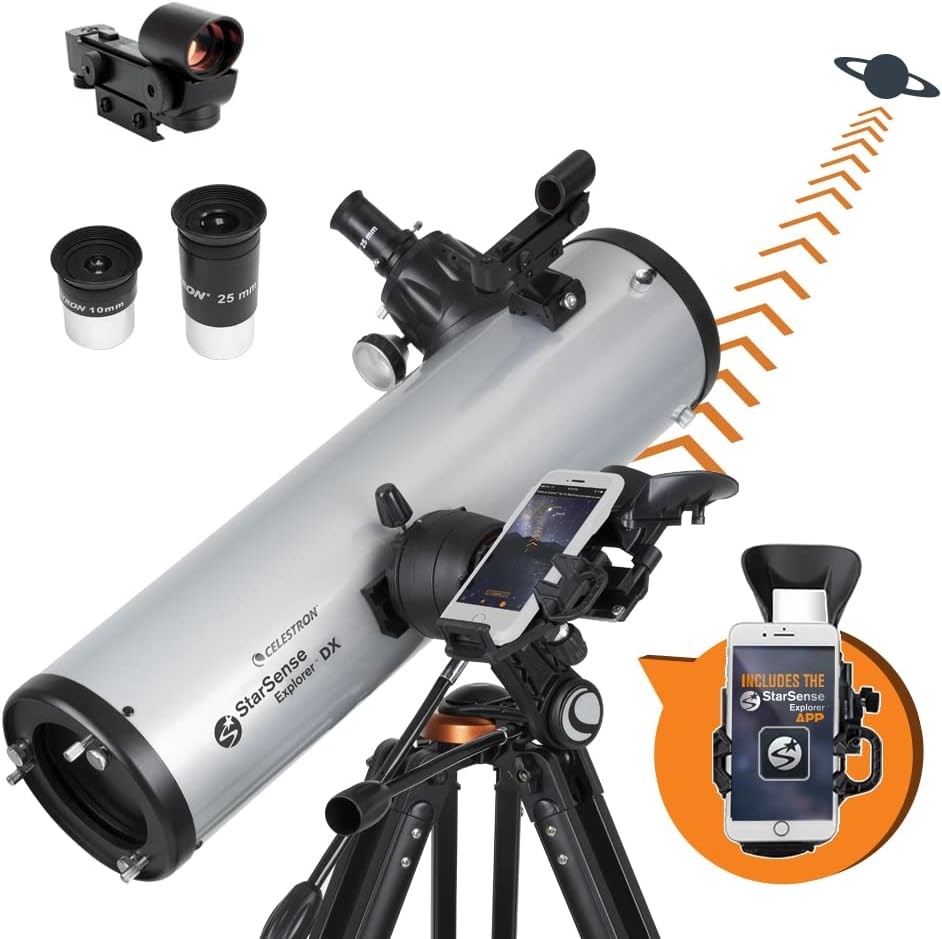
The StarSense Explorer DX 130AZ is a versatile and user-friendly telescope, earning a solid 4.5 out of 5 stars.
Key stats:
- Aperture: 130mm (5.12 inches)
- Focal length: 650mm (25.6 inches)
- Mount: Altazimuth with StarSense smartphone dock
Reasons to buy:
The StarSense Explorer DX 130AZ is an excellent choice for amateur astronomers and stargazers looking for an easy-to-use, yet powerful telescope. Its generous 130mm aperture ensures bright, clear images of celestial objects, while the smartphone-enabled StarSense app offers easy navigation and object identification. The altazimuth mount provides smooth and accurate movement, and the quick setup process ensures that the user can begin their celestial observations in no time. Overall, this telescope offers great value and accessibility for those entering the world of astronomy.
Reasons to not buy:
Although the StarSense Explorer DX 130AZ is a great telescope for beginners, more advanced users might find its features limiting as their experience grows. The altazimuth mount, while user-friendly, may not provide the tracking accuracy desired for astrophotography or detailed observation of fast-moving or transient objects. Additionally, the smartphone integration, while convenient, might not suit everyone’s preference, and the reliance on the app for full functionality could be seen as a drawback to some users.
Pros:
- Large 130mm aperture for bright, detailed images
- Smartphone-enabled StarSense app for easy navigation and object identification
- User-friendly altazimuth mount for smooth movement
- Quick and easy setup process
Cons:
- Might not suit advanced users or those interested in astrophotography
- Smartphone integration may not be preferred by all users
- Reliance on the app for full functionality could be a drawback
Frequently Asked Questions (FAQ):
Q: What should I consider when choosing a telescope for deep space observations?
A: When selecting a telescope for deep space observations, several factors are crucial to consider. The aperture size, which determines light-gathering ability, is important for capturing faint objects. Telescopes with larger apertures are generally better suited for deep space observations. Additionally, consider the type of telescope (refractor, reflector, or compound), the mount type (equatorial or alt-azimuth), and the telescope’s portability and ease of use.
Q: Which type of telescope is best for deep space observations?
A: Reflectors and compound telescopes, such as catadioptric and Ritchey-Chrétien telescopes, are popular choices for deep space observations. These telescope designs often offer larger apertures, allowing for better light collection and enhanced visibility of faint deep space objects. However, refractor telescopes with large apertures can also provide excellent views of deep space objects.
Q: Can I use a beginner-level telescope for deep space observations?
A: While some beginner-level telescopes can provide decent views of certain deep space objects, dedicated telescopes for deep space observations typically offer more advanced features and larger apertures. These specialized telescopes are designed to capture the faint details and intricate structures of deep space objects, ensuring a more rewarding and immersive experience.
Q: Are there any recommended accessories for deep space observations?
A: Several accessories can enhance deep space observations. A sturdy tripod or mount is essential for stability, especially when using high magnifications. Filters, such as nebula filters or light pollution filters, can enhance contrast and reduce light pollution. Additionally, a good-quality eyepiece or a camera adapter for astrophotography can further enhance your experience and allow you to capture stunning images of deep space objects.
Q: How much should I expect to invest in a telescope for deep space observations?
A: The cost of telescopes for deep space observations can vary significantly depending on factors such as aperture size, optical quality, and additional features. Entry-level telescopes suitable for deep space observations can range from a few hundred to a few thousand dollars. It’s essential to consider your budget, prioritize the features that matter most to you, and invest in a telescope that strikes a balance between affordability and performance.
Conclusion
In conclusion, 2023 presents an array of remarkable telescopes specifically crafted for deep space observations. These telescopes offer advanced features, superior optics, and excellent light-gathering capabilities, providing the perfect tools for exploring the depths of the cosmos. Whether you’re seeking to capture stunning images of distant galaxies or unravel the intricacies of nebulae, these top telescopes for deep space in 2023 will transport you on an awe-inspiring celestial journey. Prepare to witness the breathtaking beauty of the universe like never before.
The post Best Telescopes for Deep Space in 2023 appeared first on ReadWrite.
(4)

